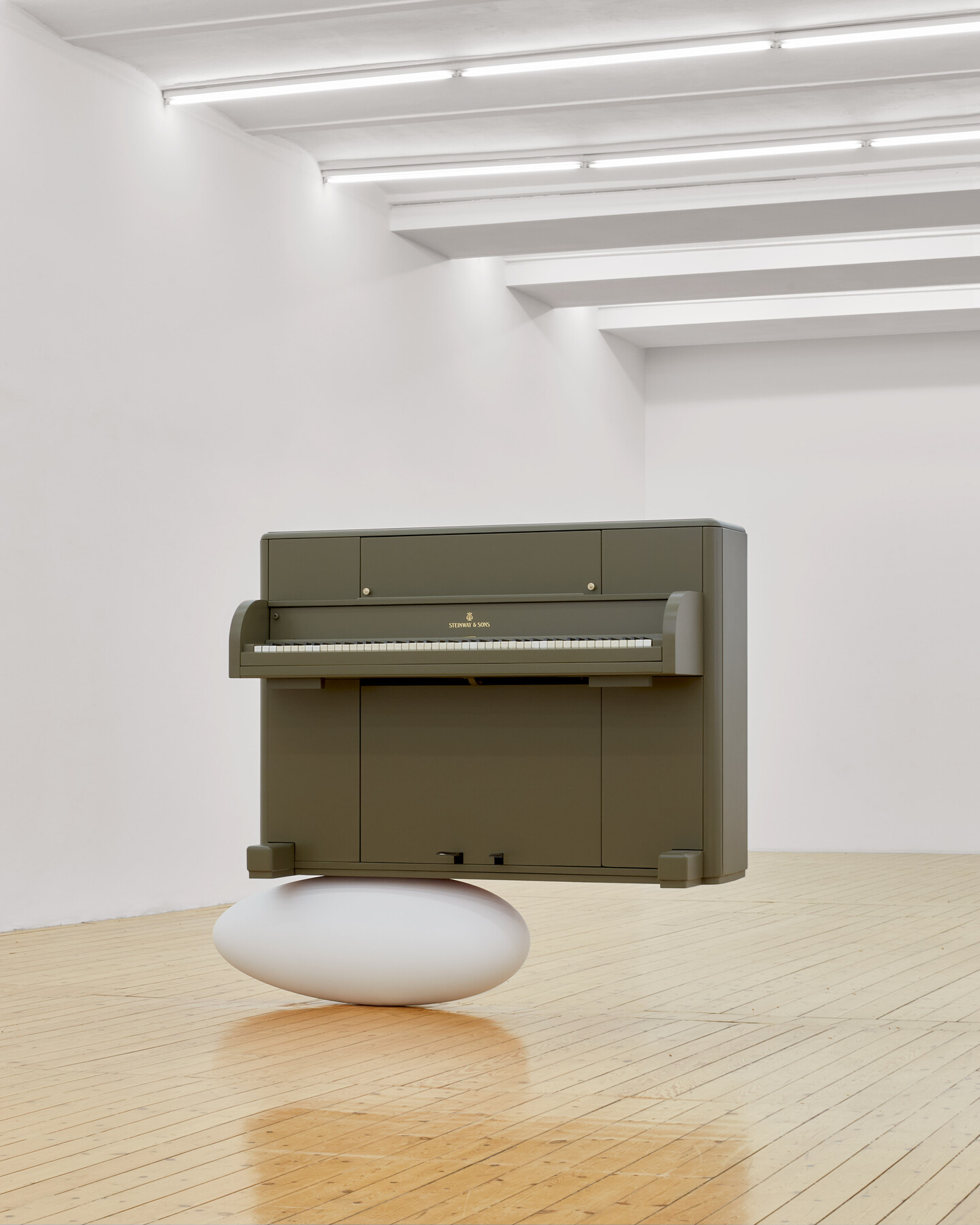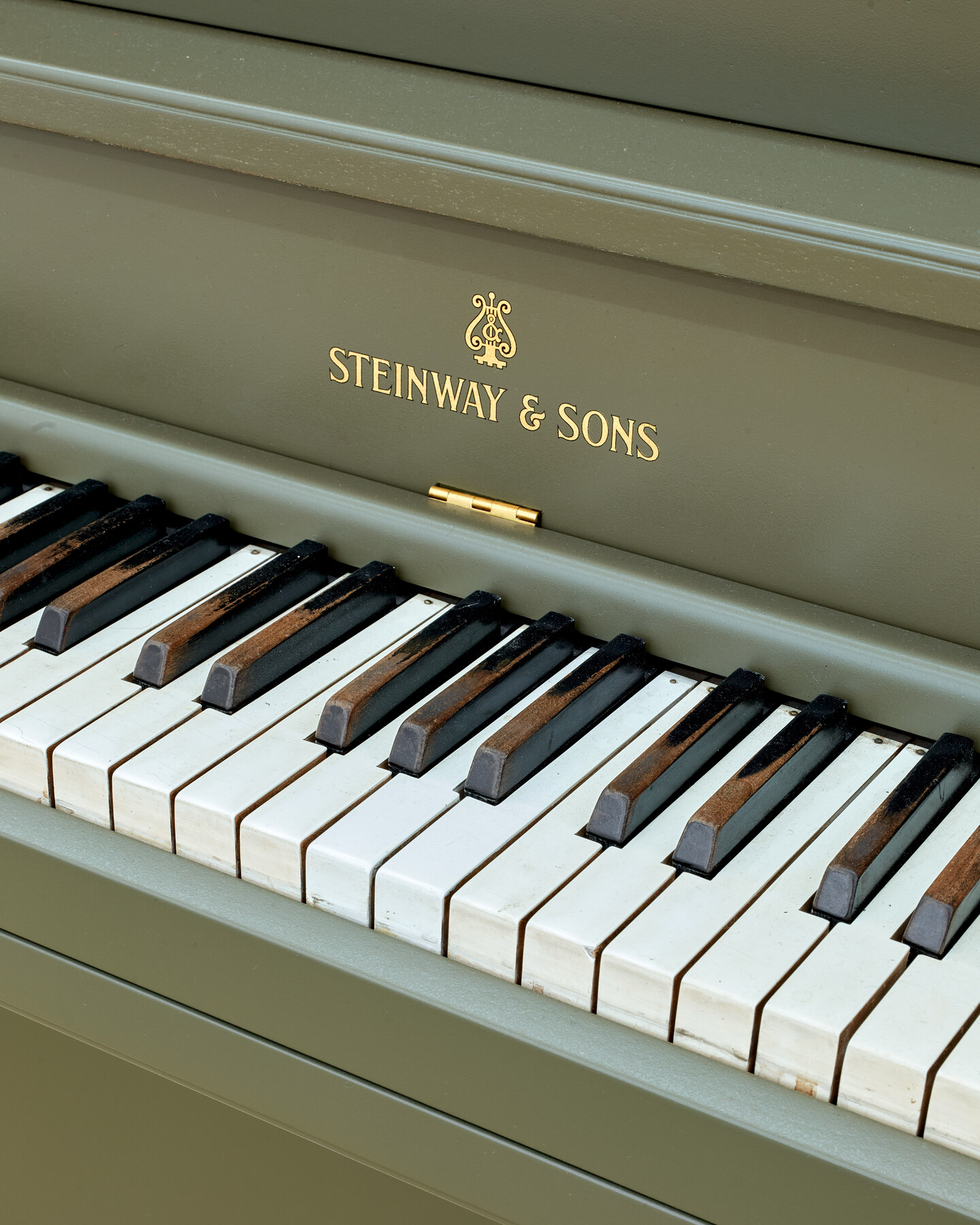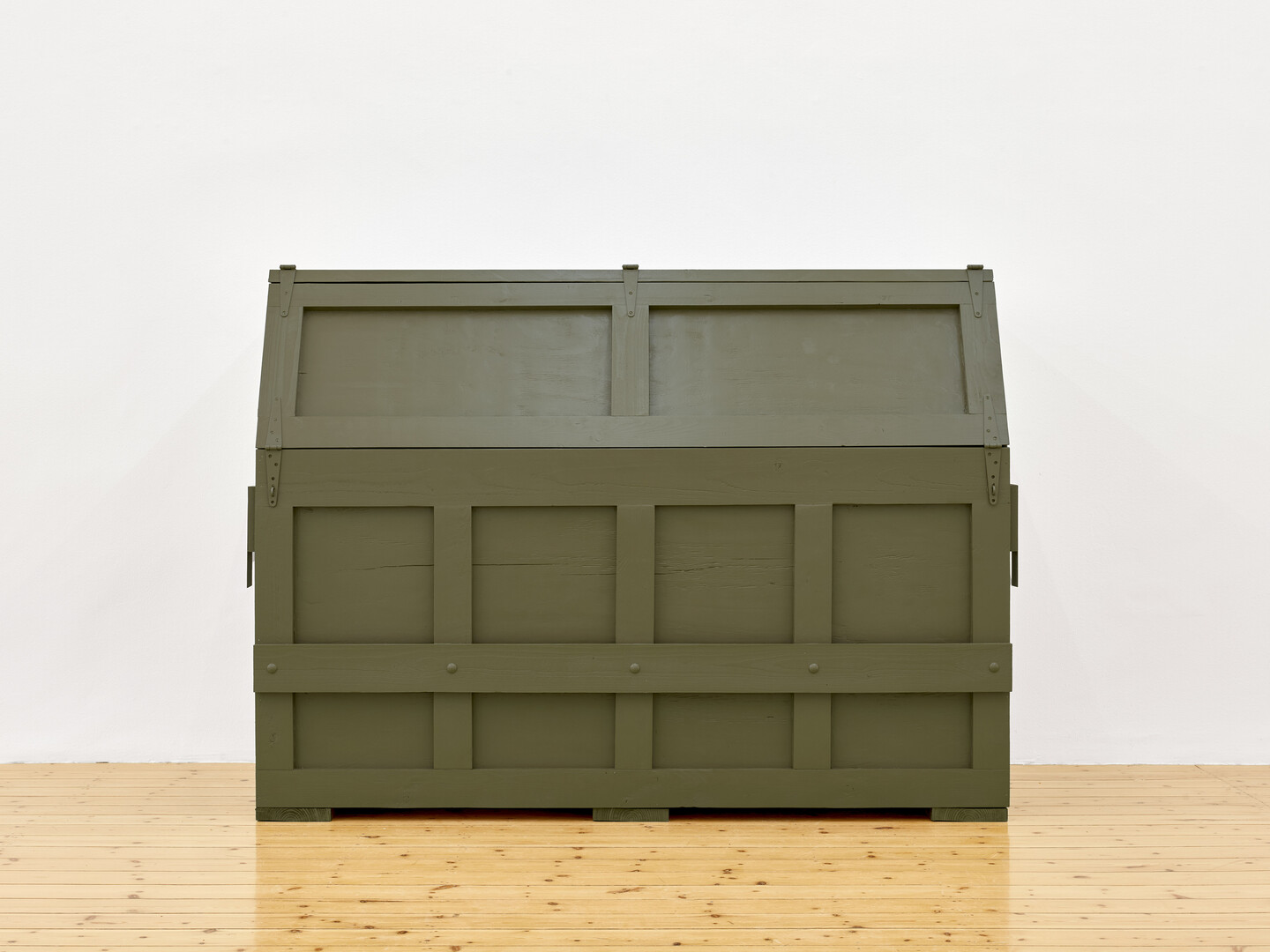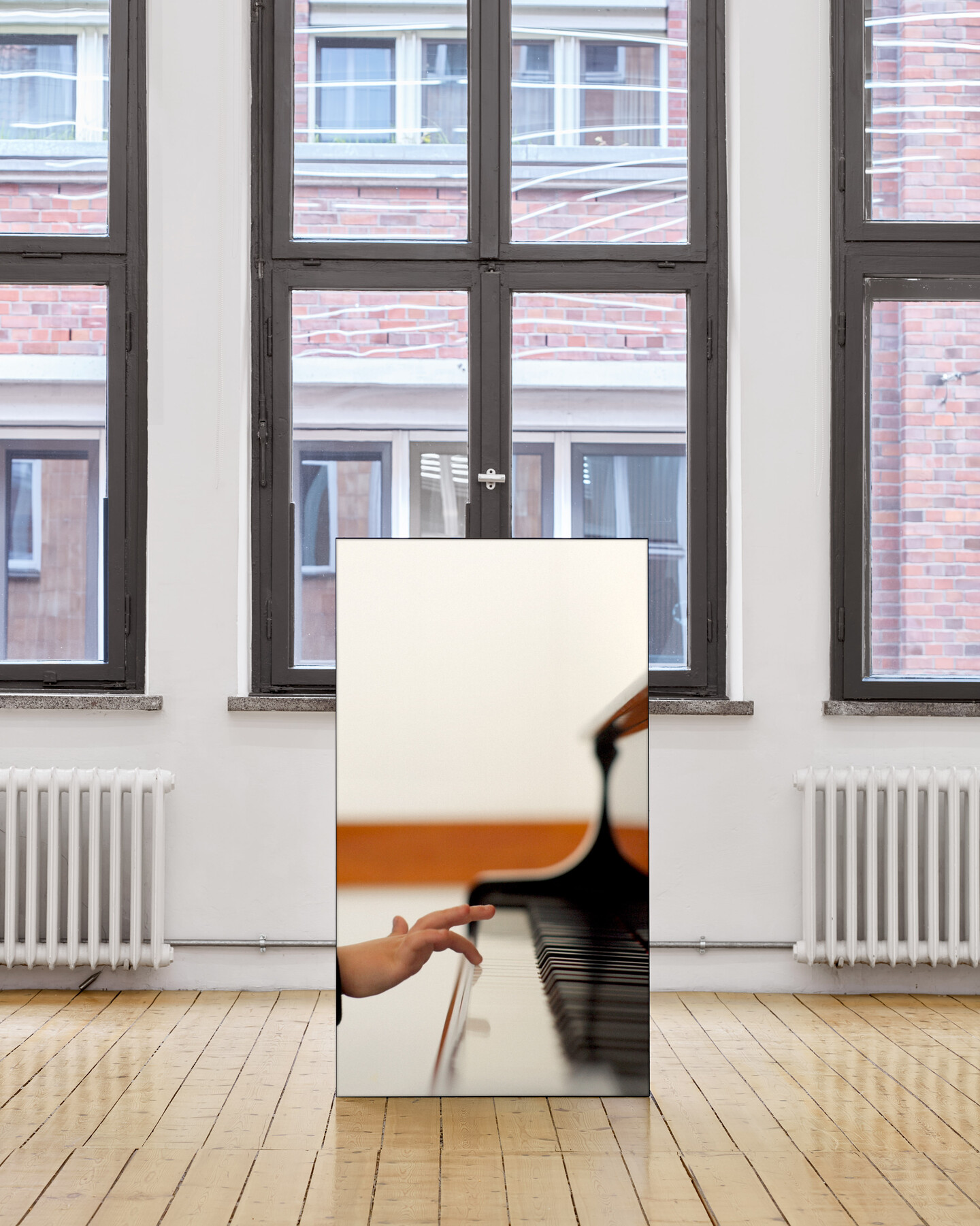In The Relief, Tarik Kiswanson continues to examine the repercussions and aftermath of war, trauma, and ruptures across historical events.
Opening on 8 May 2025, a date that marks the anniversary of the end of World War II, this solo exhibition centers on an extremely rare historical object: the “Steinway Victory Vertical,” or “G.I. Steinway”–an upright piano produced by Steinway & Sons in New York in 1942 and parachuted to U.S. and allied troops deployed across Europe to bring psychological relief through the traumatic events of the war.

The piano is one of the earliest examples in history of recreational music making. The Steinway family, who originated from Seesen in Germany, kept deep ties to Hamburg, the only German city where the family maintained a factory after their emigration to New York in 1850.

Steinway Victory Vertical, piano crate, fiberglass, resin, paint

Steinway Victory Vertical, piano crate, fiberglass, resin, paint
Commissioned during a time when civilian production had been halted and factories repurposed for the war effort, these instruments were uniquely engineered to be as lightweight as possible. Painted in olive drab camouflage, each piano was packed in a custom crate equipped with tools and tuning instructions—ready to be parachuted to where the soldiers were stationed. Of the 2,436 Victory Verticals produced during World War II, almost all were ultimately lost, damaged when landing or chopped for firewood.

Steinway Victory Vertical, piano crate, fiberglass, resin, paint

Kiswanson engages with this charged legacy through the careful restoration of one such unique piano. Removed from its original utilitarian function, it is installed in the gallery, detached from its protective casing. The instrument levitates above a child-size white cocoon, in a sculptural gesture that reimagines the wartime relic as a symbol of the historical rupture it embodies, echoing music’s transcendent and recreational potential.

Together, the installation and film form a poetic constellation—one that meditates on fragility, resilience, and the intergenerational transmission of memory. Whether through the weight of a salvaged wartime piano or the tentative notes of a partition learned anew, Kiswanson invites us to listen closely to the interstitial, often overlooked moments that shape cultural identity and collective consciousness. In doing so, the exhibition becomes a space not only of reflection, but of regeneration—a site where the echoes of history resound in the acts of becoming and belonging.